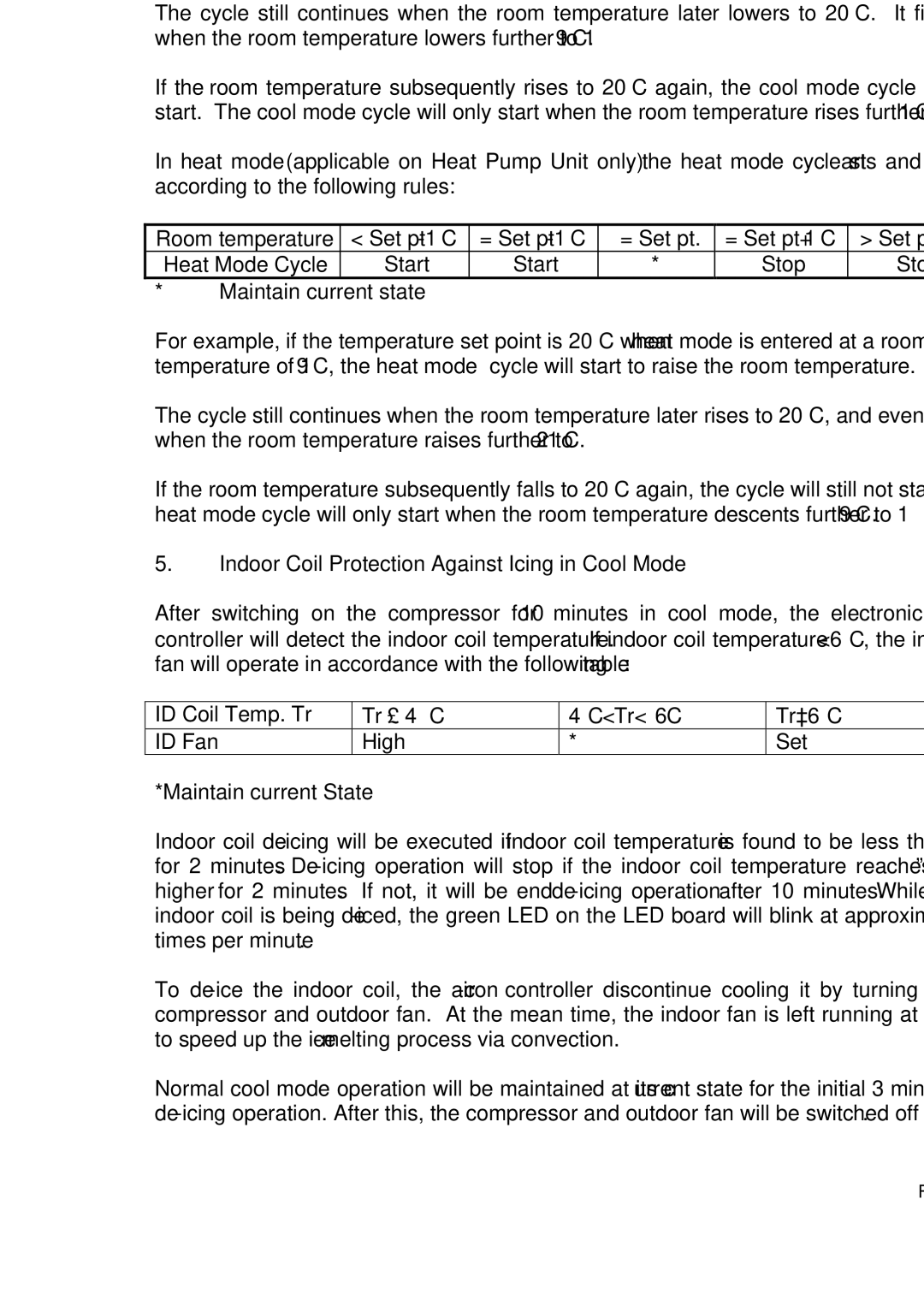R407C specifications
Fedders R407C is a commonly used refrigerant that has made significant strides in the air conditioning and refrigeration industries. Developed as a replacement for R22, R407C blends three refrigerants: R32, R125, and R134a. This combination gives it versatile applications and makes it a popular choice in residential and commercial systems.One of the main features of R407C is its zero ozone depletion potential (ODP). This is crucial in an era where environmental regulations are stricter and focus on reducing substances that could harm the ozone layer. R407C also boasts a relatively low global warming potential (GWP) compared to other refrigerants, which aligns with the growing demand for low-impact environmentally friendly solutions.
Technologically, R407C is compatible with many existing systems, particularly those designed for R22, making it a favored transitional refrigerant during the phase-out of ozone-depleting substances. However, it is vital to note that R407C operates at a higher pressure than R22, meaning that certain system components may need upgrading to ensure optimal performance and safety.
In terms of thermodynamic characteristics, R407C has a refrigerating effect similar to R22, making it efficient for cooling purposes across various applications. It has good heat transfer properties, which translates to efficient energy use in both residential and commercial installations. The refrigerant operates effectively across a broad temperature range, making it an ideal choice for air conditioners, heat pumps, and chillers.
Moreover, R407C is a near-azeotropic blend, which implies that it maintains its composition during evaporation and condensation. This characteristic helps in minimizing the risks of refrigerant fractionation, allowing for consistent performance over time.
Another noteworthy aspect of Fedders R407C is its favorable safety profile. It has a lower toxicity level compared to some other refrigerants, which enhances its suitability for varied applications. Additionally, it is non-flammable under normal conditions, making it a safe option for different installations.
In conclusion, Fedders R407C is characterized by its environmental safety, excellent thermodynamic qualities, and compatibility with existing refrigeration systems. As industries strive to meet new environmental regulations, R407C serves as a reliable option, providing performance without compromising on ecological concerns. Its pivotal role in transitioning to greener alternatives makes it a critical refrigerant in today’s climate-conscious market.
